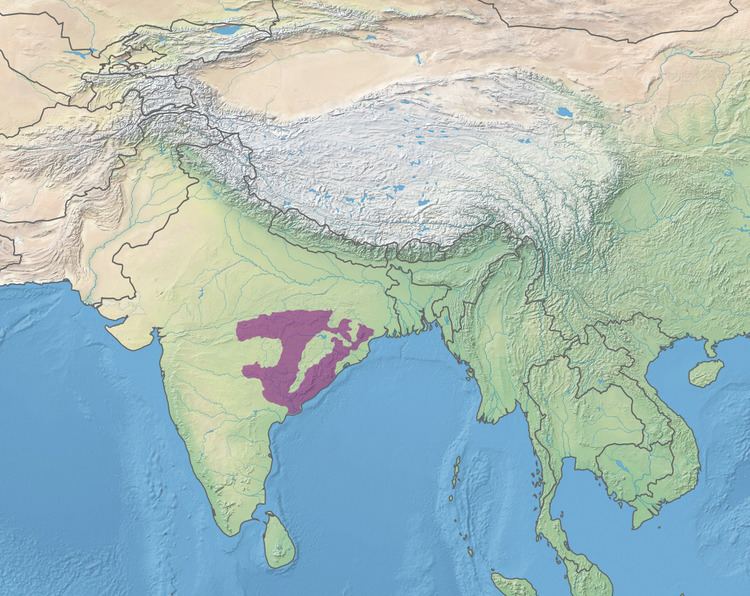 | ||
The Eastern Highlands moist deciduous forests is a tropical moist broadleaf forest ecoregion of east-central India. The ecoregion covers an area of 341,100 square kilometers (131,700 sq mi), extending across portions of Andhra Pradesh, Chhattisgarh, Jharkhand, Madhya Pradesh, Maharashtra, Orissa, and Telangana states.
Contents
Setting
The Eastern Highlands moist deciduous forests extend from the Bay of Bengal coast in northern Andhra Pradesh and southern Orissa, across the northern portion of the Eastern Ghats range and the northeastern Deccan Plateau, to the eastern Satpura Range and the upper Narmada River valley.
The forests of the ecoregion are sustained by the moisture-bearing monsoon winds from the Bay of Bengal, which lies to the southeast. The ecoregion is bounded on the north and west by tropical dry deciduous forest ecoregions, including the Central Deccan Plateau dry deciduous forests to the southwest and west, the Narmada valley dry deciduous forests to the northwest, and the Chota Nagpur dry deciduous forests to the north and northeast. The drier Northern dry deciduous forests ecoregion, lying west of the Eastern Ghats range, is completely surrounded by the Eastern Highlands moist deciduous forests, in the rain shadow of the Ghats, which partially block the moisture-laden monsoon winds off the Bay of Bengal. The humid Orissa semi-evergreen forests ecoregion lies to the northeast in the coastal lowlands of Orissa.
Flora
The ecoregion's forests are dominated by Sal (Shorea robusta), in association with Terminalia, Adina, Toona, Syzygium, Buchanania, Cleisanthus, and Anogeissus. The flora of the ecoregion shares many affinities with the moist forests of the Western Ghats and the eastern Himalayas.
Fauna
The ecoregion is considered globally outstanding by biologists for its assemblage of large mammals, including tiger (Panthera tigris), wolf (Canis lupus), gaur (Bos gaurus), and sloth bear (Melursus ursinus). The Asian Elephant (Elephas maximus) has been extirpated from the ecoregion.
Conservation
Approximately 25% of the original habitat remains, much of it in blocks of 5000 km² or larger. 31 protected areas, totaling 13,500 km², preserve about 4% of the ecoregion's intact habitat. The largest protected area in the ecoregion is Simlipal National Park in Odisha state.
